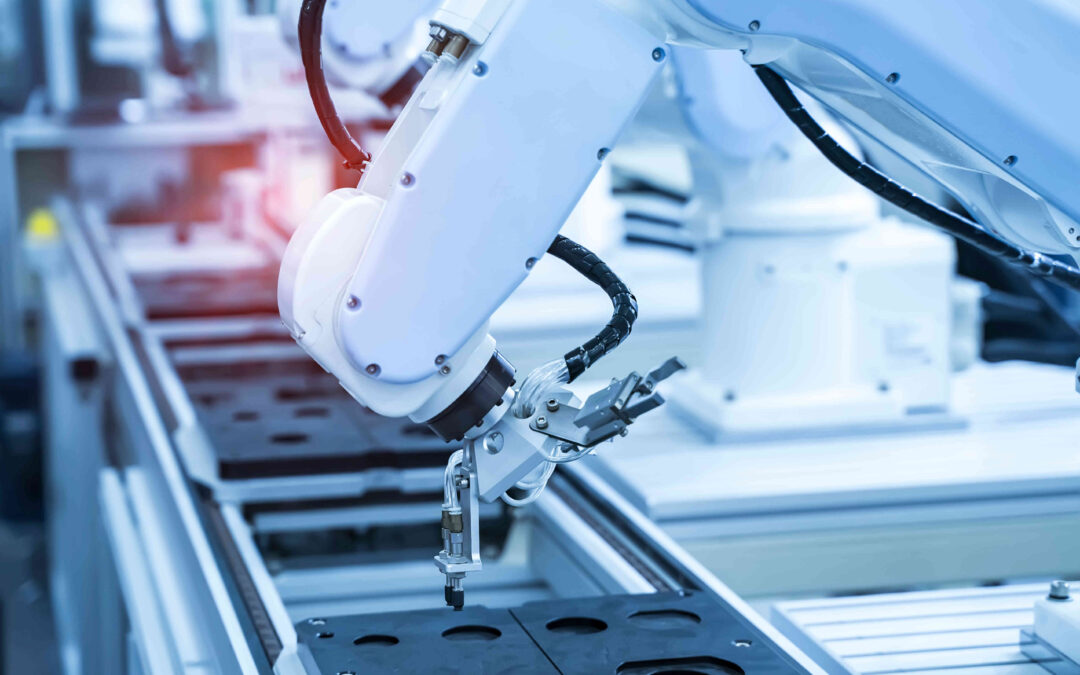Every year, more and more production lines are being robotised. We are talking here about new lines and lines that have been in operation for a long time. They are often upgraded with brand new industrial robots, which are, among other things, cost-effective and more productive.
Table of contents
- What are industrial automation and robotic assembly lines?
- Advantages of robotic assembly lines
- Robotic assembly lines – use
- Robotic assembly lines – summary
What are industrial automation and robotic assembly lines?
Advanced control systems are required to ensure seamless operation of the entire production line, including various equipment types. They enable machines to work with minimal human input or even independently. This is what industrial automation is all about – the automation of production processes. Nowadays, as we produce more and more and ever faster, this engineering field constantly expands to cover different industries – from the food to the automotive industry.
In recent years, robotic assembly lines have become increasingly popular. These are lines that include industrial robots. Assembly line robots make it possible not only to speed up the entire production process but also to improve the quality of production thanks to the precision and repeatability of robots, which are beyond human capabilities. Industrial robots used in body welding in the automotive industry are a good example.
The robotic assembly system is used in different industries. Industrial robots are multi-tasking machines that can be equipped with various types of tools, allowing them to perform various tasks.
Advantages of robotic assembly lines
One of the main advantages of robotic assembly lines is the higher efficiency of the entire production process. Robots never get tired and do not need breaks. In addition, some of them move at speeds unattainable by humans. The speed at which an industrial robot can operate depends on many factors, such as the type of robot design and the weight of the tooling installed on it.
Another advantage that assembly line robots have is their precision and repeatability of movements, which they maintain despite the high speeds at which they often move. This ensures that the likelihood of the robot making a mistake is close to zero. This directly impacts reducing production costs, as fewer defective products are manufactured on the assembly line, which cannot leave the factory and must be destroyed.
Industrial robots are multifunctional devices that can perform a variety of complex tasks according to how they are programmed. Thanks to their wide range of movement, assembly line robots can perform multiple activities one after the other. Such versatility is unfortunately unattainable for standard lines equipped with simple mechanical systems.
After all, assembly line robots mean increased safety in the production process. Industrial robots can work in conditions that are highly harmful to humans. Robots used in the automotive industry in the welding and painting process are excellent examples. In both cases, the robots work in an environment with fumes that are toxic to humans.
A robotic assembly line is often enclosed in a “cage” created from special fence panels. The cage is typically equipped with a safety lock. If an operator or other person wants to get inside the fence, they have to unlock the lock first, which makes the entire line stop immediately, which ensures that the person in the cage is safe.
Robots designed to work alongside humans are an exception. These are so-called cobots that move at low speeds (maximum 250 mm/s) so that they cannot cause serious harm to the people working with them. Collaborative robots are additionally equipped with advanced safety systems that analyse the space around the robot and stop its arm immediately when they detect the possibility of human contact.
Robotic assembly lines – use
Despite the fact that the cost of purchasing a robotic line is much higher than a conventional line, more and more companies are interested in purchasing robotic lines.
Industrial robots are currently used, among other things, for tasks that are incredibly monotonous for humans, such as bolting components together or sorting products. This way, the operator can deal with more demanding tasks that do not require prolonged repetitive motion.
Assembly line robots are also used to perform activities that require a lot of force and thus put the health of the operator at risk. This includes loading parts onto the line, unloading them and palletising the finished products. Robots are also involved in the manufacturing process of parts and operating CNC machines.
We have already mentioned that robots are also used in jobs that would otherwise pose a risk to human health due to contact with harmful substances, for example. The robot will also prove useful wherever high accuracy, repeatability of movements and speed of operation are required. If you do not know whether industrial robots will suit your production process, please look at UNILOGO’s offer and our completed projects.
Robotic assembly lines – summary
We can confidently say that robotic assembly lines and industrial automation are the present and future of any modern production process. Although the initial cost of buying a robot is usually relatively high, when you add up all its advantages, you can easily conclude that assembly line robots are a solution that pays off.
An industrial robot is a machine characterised by extreme precision and repeatable movements. This prevents it from making mistakes that would result in defective products leaving the production line. Despite their high accuracy, the robots are also characterised by high productivity and speed. The right robot will also work alongside humans. However, it must be equipped with appropriate safety systems.
If you would like to purchase a robotic production line or if you have any doubts as to whether this type of solution will work for your business, please use the contact form on our website. Our experts will certainly clarify all your doubts and help you choose the best solution for your company.


